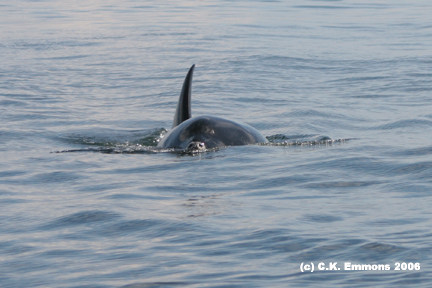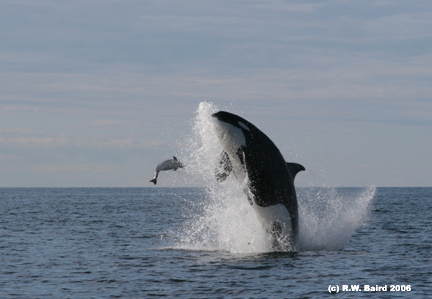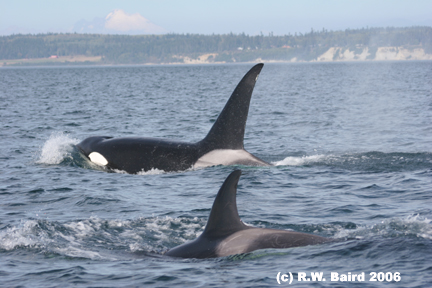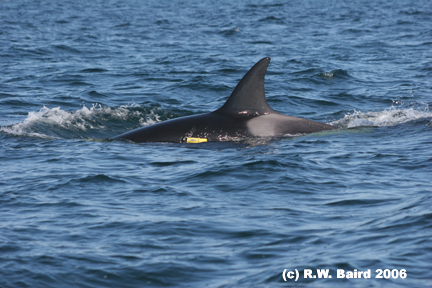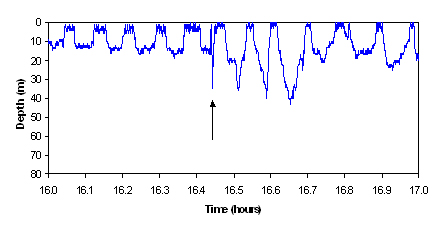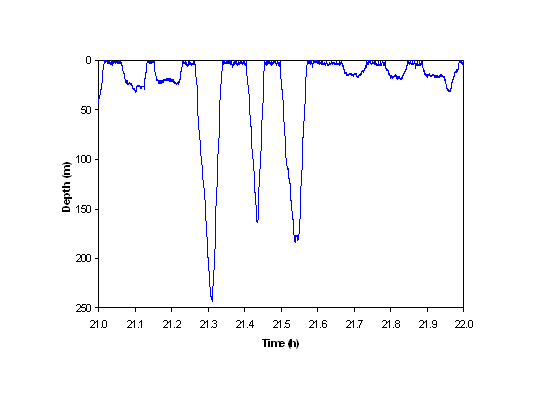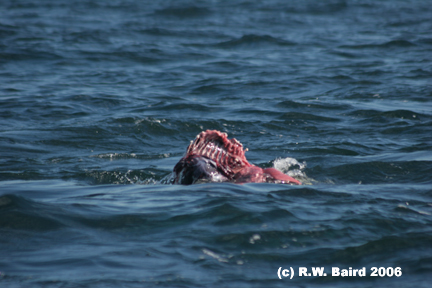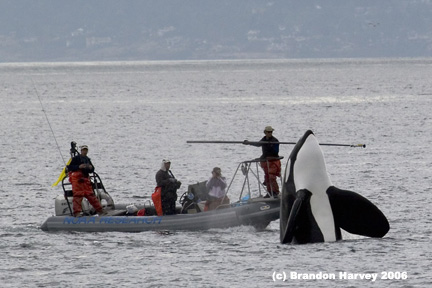As part of a study to examine night-time and sub-surface behavior of mammal-eating (“transient”) killer whales, and compare sub-surface behavior with that of fish-eating (“resident”) killer whales, we have been deploying suction-cup attached time-depth recorder (TDR)/VHF radio tags on killer whales around the San Juan Islands. The time-depth recorders (manufactured by Wildlife Computers in Redmond, WA) record depth once per second during the period of attachment. Deployment of these tags is done using a 20′ long windsurfing mast, using roof-rack suction cups from Canadian Tire, and the tags release from the whale after a period of time, float to the surface, and are recovered using the VHF radio signals. This is a collaborative project between Cascadia Research, the Northwest Fisheries Science Center and Fisheries and Oceans Canada, and is authorized under scientific research permits in both the U.S. and Canada.
Prior to 2006 we’d deployed six of these tags on mammal-eating killer whales in British Columbia (in 1993 and 1998) and Alaska (in 1998) and obtained 50 hours of dive data, with three of the tags remaining on into the night (though two of the three were on whales in the same group). In September 2006 we deployed four additional tags, obtaining 42 additional hours of dive data, with all four tags remaining on into the night. Tags have been deployed on T100B (on September 10, remaining attached 13 hours, and possibly again on September 18, remaining attached for 7 hours), T30C (on September 14, remaining attached 12 hours), and T101A (on September 15, remaining attached 10 hours). Photos from these encounters and examples of dive data are below. During the periods we’ve followed whales with tags attached we’ve had a number of observations of predation, on harbor porpoise, harbor seals, and unidentified marine mammals (most likely harbor porpoise or harbor seals).
One of the bonus features of deploying these suction cup attached tags is that when skin sloughs off the whale some it gets caught in a silicone grease we put on the suction cup, and we’ve been successful at getting sloughed skin from all four of the whales tagged in September 2006. These skin samples go to the Northwest Fisheries Science Center genetics lab for contribution to studies of killer whale population structure, are also used to confirm the sex of the tagged whales genetically, and will be used to confirm if the whale tagged September 18 was T100B (with a comparison to the sloughed skin obtained September 10).
We would like to thank the Pacific Whale Watch Association and the individual companies and operators who gave us room to work with the whales and also explained the research to their passengers, as well as the Center for Whale Research on San Juan Island for providing an identification guide to transient killer whales for identifying tagged whales.
